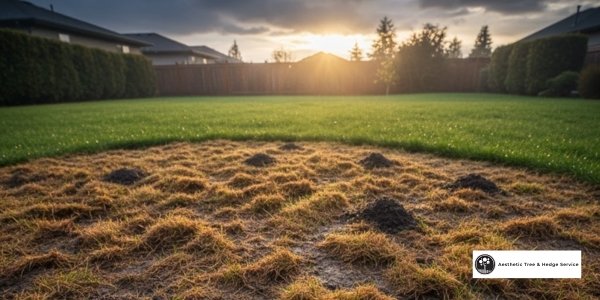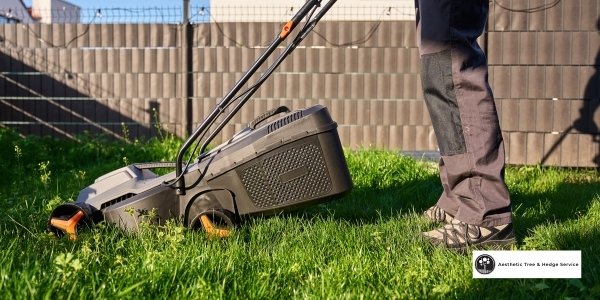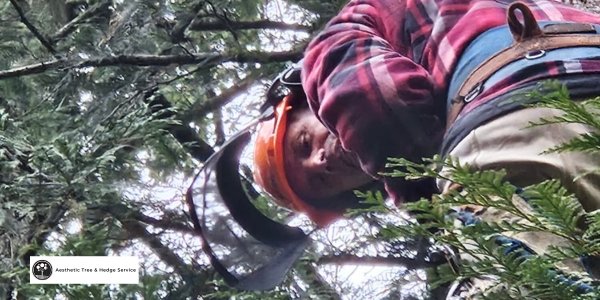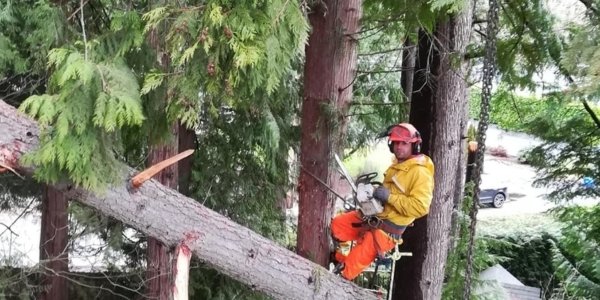Understanding the Impact of Global Warming
Rising temperatures and prolonged heat waves stress trees, affecting their health and growth. Trees need additional care to withstand these conditions and continue to thrive.
Best Tree Care Practices
- Regular Inspections Conducting regular inspections is essential to identify early signs of stress or disease in trees. Look for discolored leaves, brittle branches, cracked bark, and fungal growth. Early detection allows for prompt intervention and treatment, preventing minor issues from becoming severe problems.
- Strategic Pruning Proper pruning techniques are crucial for promoting healthy growth and improving air circulation. Remove dead or damaged branches to reduce stress on the tree and minimize the risk of disease spread. Pruning also helps shape the tree, making it more resilient to strong winds and heavy rain.
- Watering and Mulching Ensuring that trees receive adequate water and mulch is vital during heat waves. Deep watering techniques ensure that moisture reaches the root zone, while mulch helps retain soil moisture and regulate soil temperature. Apply a 2-4 inch layer of organic mulch around the base of the tree, extending to the drip line, but keep it away from the trunk.
- Soil Management Maintaining healthy soil is fundamental for tree health. Adding compost or organic matter improves soil structure, increases nutrient availability, and supports robust root systems. Regularly test soil pH and nutrient levels to make necessary adjustments, ensuring optimal conditions for tree growth.
- Shading and Protection Providing temporary shade using shade cloths or structures can significantly reduce direct exposure to the sun. This helps protect trees from extreme heat, reducing the risk of sunburn and heat stress. Additionally, installing windbreaks or barriers can shield trees from hot, dry winds.
- Choosing Heat-Tolerant Species When planting new trees, consider selecting heat-tolerant species that are better adapted to withstand extreme temperatures. Native species are often more resilient and require less maintenance, making them an excellent choice for sustainable landscaping.
- Fertilization Proper fertilization supports tree health by providing essential nutrients. Use slow-release fertilizers that supply a steady nutrient source over time. Avoid over-fertilization, as excessive nutrients can lead to imbalances and stress the tree further.
- Pest and Disease Management Heat-stressed trees are more susceptible to pests and diseases. Monitor trees regularly for signs of infestations or infections. Implement integrated pest management (IPM) practices, including biological controls and organic treatments, to keep pest populations in check without harming beneficial organisms.
Benefits of Proper Tree Care
Implementing these tree care practices helps trees withstand the challenges posed by global warming. Healthy trees enhance the beauty and value of your property, contribute to a balanced ecosystem, and provide shade and cooling effects. Trees also improve air quality, reduce soil erosion, and support wildlife habitats.
Cost Considerations
The cost of implementing these tree care practices varies depending on the extent of care needed. Regular inspections and maintenance can range from $150 to $500 per year. Investing in proper tree care helps avoid higher costs associated with severe tree damage, such as emergency removals or extensive treatments.
When to Call an Arborist
If your trees show severe signs of stress or damage despite following these practices, contact a certified arborist. Arborists have the expertise and equipment to provide advanced treatments and ensure the health of your trees. They can assess the situation, diagnose problems, and recommend appropriate interventions to save your trees and maintain the beauty and safety of your landscape.
By adhering to these best practices, you can help your trees survive the extreme heat caused by global warming and keep your garden lush and vibrant.





